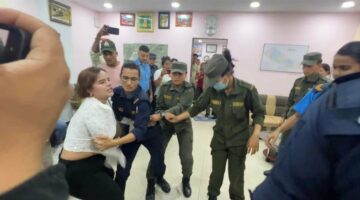Taranath Dahal and Nanu Maiya Khadka
The International Day to End Impunity for Crimes Against Journalists—marked on November 2 every year—commemorates journalists who have been murdered, forcefully disappeared and faced violence for reporting news. The United Nations in 2013 announced this day to be observed globally in response to the continuous lobbying of the organisations working for freedom of expression in commemoration of the deadly attack and killing of 32 mediapersons and journalists named Ampatuan Massacre (also known as the Maguindanao Massacre) in the Philippines in 2009.
The commemoration this year is taking place in the wake of Israel’s devastating war on Gaza, with a severe toll on journalists and massive civilian casualties. Since the start of the conflict on October 7, the Committee to Protect Journalists (CPJ) has documented the death of at least 31 journalists—26 Palestinian, 4 Israeli and one Lebanese—as of October 30.Journalists—the front-line human rights defenders—work actively even during conflicts, protests and violence, and they often face threats for bringing information to the public.
UNESCO’s Observatory of Killed Journalists records the death of 1,626 journalists around the world since 1993, with 45 journalists killed in 2023 alone. Similarly, a total of 68 journalists were killed globally last year. In comparison, the recent data on the Israel-Gaza conflict is a dreadful figure. The journalists have also been deprived of their rights to free reporting due to the deliberate destruction of telecommunications infrastructure in Gaza, leading to a total blackout of internet and mobile networks. This destruction of telecommunications infrastructure has significantly deprived people of their right to access information.
Killings in Nepal
Nepal also witnessed horrible killings of journalists during a decade-long Maoist insurgency (1996-2006). Freedom Forum, an organisation working on press freedom and media development, documented the murder of 23 journalists, out of which 14 were killed before the Comprehensive Peace Accord (November 21, 2006) or during the armed insurgency and the remaining nine after the CPA—the post-insurgency period.
Though the killings of journalists have been documented, proper investigation and action against perpetrators are still awaited. The perpetrators go unpunished in 90 percent of the cases. This culture of impunity fuels a growing threat to working journalists and self-censorship among them, deepening impunity for crimes against journalists.
That the working journalists were killed even after the CPA demonstrates how journalists faced tragic times even in the peace process. It also marked political parties’ and governments’ disregard for journalists’ rights and lives. Families of slain journalists are still awaiting justice, and prosecution is yet to start in a few cases. For instance, in 23 murder cases of journalists, convicts of four cases—Dekendra Raj Thapa, Uma Singh, Birendra Sah and Arun Singhaniya—have been arrested and are serving their jail terms, whereas three cases—Yadav Poudel, Jagat Prasad Joshi and Jamim Sah—are sub-judice. Similarly, the cases of Krishna Bahadur Sen and Gopal Giri are pending at the Truth and Reconciliation Commission. The remaining cases of Ishwor Budathoki-Sindhupalchowk, Kumar Ghimire-Sindhuli, Dev Kumar Acharya-Jhapa, Raj Kumar KC-Ramechhap, Kamal AC-Tanahun, Maheshwor Pahari-Kaski, Rohan Chaudhary-Mahottari, Ganesh Chaudhary-Mahottari, Khagendra Shrestha-Dharan, Ambika Timilsena-Morang, Nabaraj Sharma Basanta-Kalikot, Gyanendra Khadka-Sindhupalchowk and Devi Prasad Dhital-Tulsipur are yet to be investigated, prosecuted and adjudicated through an independent judiciary.
Three journalists—Dhan Bahadur Rokaya-Rolpa, Prakash Singh Thakuri-Mahendranagar and Milan Nepali-Kathmandu—forcefully disappeared, and their whereabouts are still unknown. Few cases are registered at the Commission for Investigation of Enforced Disappeared Persons (CIEDP), but the investigation is yet to be done.
Political meddling
Political parties and leaders express written and verbal commitments to press freedom and the rights of journalists, but they fail to fulfil their promises. They say that the media assisted political struggles to achieve democracy. However, once they gain power, they forget the role of the media and suppress journalists.
After signing the Peace Accord, the government formed two commissions to address the conflict era cases: Truth and Reconciliation Commission and CIEDP to address the conflict era human rights violations. These transitional justice mechanisms’ failure is worth noting here. These mechanisms sometimes get too much attention while being ignored for a long time, all because of political interest and bickering for power. Actually, politicos take transitional justice hostage.
Last year, the Government of Nepal tabled a Bill to amend transitional justice mechanisms (TRC and CIEDP), which failed to ensure justice to victims and was against the national and international norms of transitional justice and human rights. Amid huge backlash from conflict victims and civil society, the Bill is still pending in parliament.
During his visit to Nepal this week, UN Secretary-General Antonio Guterres talked about transitional justice, reminding the Government of Nepal to keep victims at the centre in accordance with international law and Supreme Court verdicts. It is noteworthy how Nepali political parties will consider Guterres’ reminder and address the plights of conflict era victims. The voices of the families of victims must be heard and prioritised while finalising the transitional justice bill to ensure justice for the journalists who gave up their lives for reporting.
The vicious cycle of impunity should be broken immediately. Nepal has no warring parties, but non-enforcement of law is serious. The present threats of digital surveillance and political intolerance must be minimised to prevent intimidation against journalists in Nepal.
Further, Nepal has failed to acknowledge and commit to implementing the UN Plan of Action on the Safety of Journalists, developed in 2012. The action plan speaks about the fundamental aspects of the prevention, protection and prosecution of violence against journalists. Additionally, baseline data and targets in the context of Nepal are also missing for Sustainable Development Goal 16.10.1, which ensures the safety of journalists.
It is up to the state to protect journalists and victims. At a time when our peace process and new constitution are hailed globally, the indifference to impunity relating to crimes against journalists is a stark reminder, a blot on justice, and an indicator of a democratic deficit.
Source: The Kathmandu Post (November 1, 2023)
Link: https://kathmandupost.com/columns/2023/11/01/ensure-justice-to-journalists


